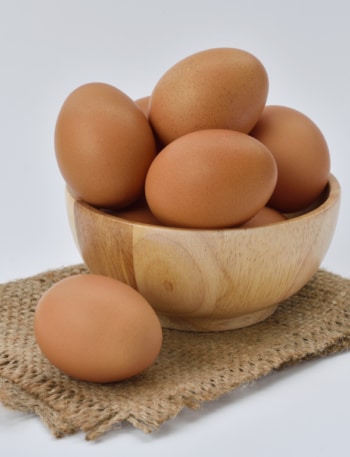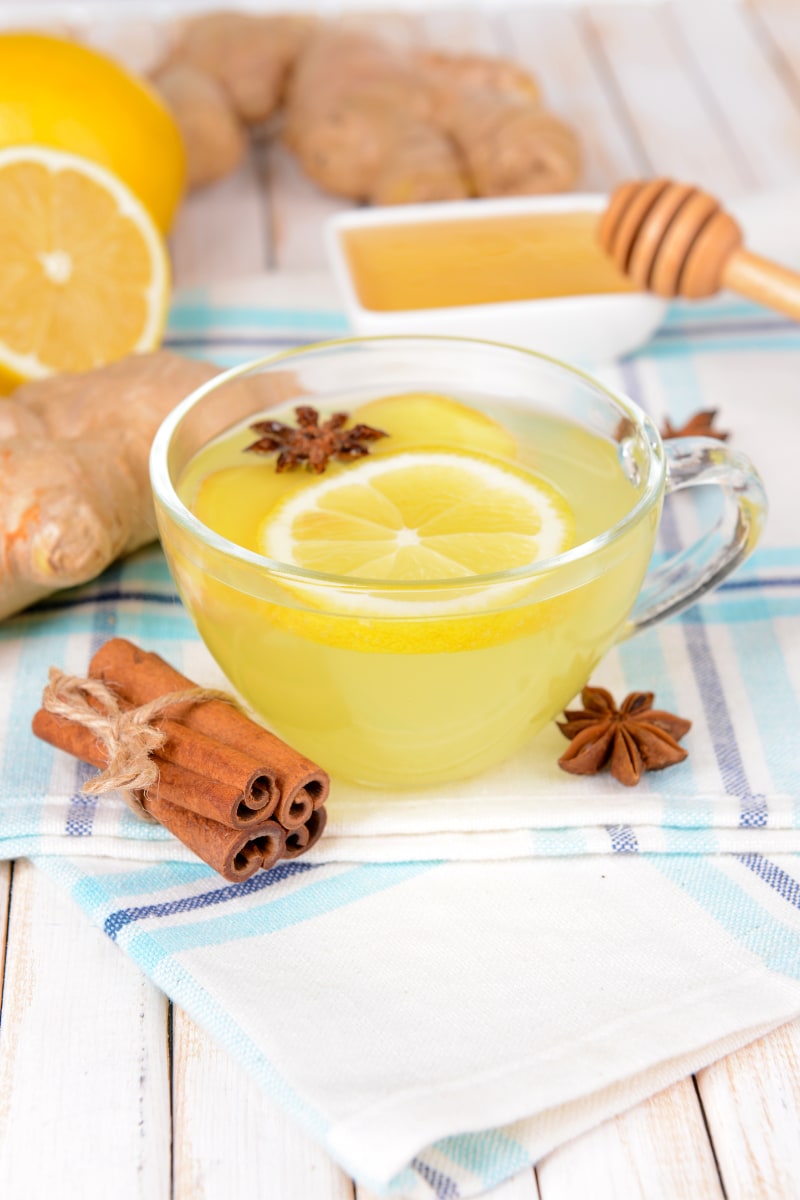Shilajit is a blackish-brown powder, or an exudate derived from rocks found at high altitudes, particularly in the Himalayan mountain range across India and Nepal. It has also been discovered in other regions including Russia, Tibet, Afghanistan, and more recently, in the northern part of Chile, where it is known as Andean Shilajit.1,2
Shilajit, also referred to as salajit, shilajatu, mimie, or mummiyo, is a popular Ayurvedic supplement known for its health benefits.2 In this article, you will learn about the health benefits of shilajit proven by research, its risks, and possible side effects.

Traditional Uses of Shilajit

Shilajit, recognized as a pivotal element within Ayurvedic medicine, is distinguished by its properties as a rejuvenator. Within this framework, it has been associated with various health advantages, including the enhancement of longevity, rejuvenation, and the prevention of aging processes.3
Historically, individuals from Nepal and the northern regions of India have traditionally consumed shilajit, with children often ingesting it alongside milk for breakfast. The Sherpas, in particular, consider shilajit to be an integral part of their diet, boasting a population renowned for their robustness and exceptional longevity.3
Potential Health Benefits of Shilajit
Research on the potential health benefits of shilajit is currently limited. Although shilajit has been the subject of laboratory and animal studies for various health conditions, there is insufficient evidence to support its use for some conditions, primarily because of a scarcity of human research. Here are 13 potential health benefits of Shilajit that are supported by research:
1. May prevent or slow the progression of Alzheimer’s Disease
The unique molecular structure of shilajit has led some researchers to hypothesize its potential in either preventing the onset of Alzheimer’s disease or mitigating its progression. Shilajit is endowed with a potent antioxidant known as fulvic acid. This compound has been shown to inhibit the accumulation of tau proteins, which are implicated in cognitive decline.1
The accumulation of tau proteins has been associated with the damage of brain cells and has been linked to the development of Alzheimer’s disease. A study revealed that the consumption of Shilajit may enhance the symptoms of Alzheimer’s disease and possibly even prevent or slow its progression, attributed to its ability to inhibit tau protein accumulation. Nonetheless, further research is imperativae to more comprehensively investigate this potential association.3
2. May prevent peptic ulcer
Shilajit may lower the risk of stomach ulcers. The presence of fulvic acid and 4-methoxy 6-carbomethoxybiphenyl in Shilajit reduces the production of stomach acid and pepsin, the shedding of cells, and also serves as a protective layer for ulcers.4
3. May reduce inflammation
Research highlighted that fulvic acid, a crucial component of Shilajit, has anti-inflammatory characteristics and may offer positive impacts on the immune system. The researchers suggest that these attributes could be advantageous for the prevention or relief of certain persistent inflammatory diseases, including asthma, allergies, eczema, and diabetes. Nonetheless, more research is required to explore the potential advantages of fulvic acid.5
4. May support bone health in females
The impact of Shilajit supplementation on postmenopausal women, aged between 45 and 65 years, diagnosed with osteopenia was assessed. The findings revealed that supplementation with either 250 mg or 500 mg of shilajit, in comparison to a placebo, led to a reduction in bone loss, inflammation, and oxidative stress. These factors are known to contribute to an elevated risk of osteoporosis and bone fractures.6
5. May help with altitude sickness
Individuals may ingest Shilajit in an effort to alleviate symptoms associated with altitude sickness, including insomnia, headache, nausea, and fatigue. Altitude sickness is attributed to hypoxia, or a deficiency in oxygen supply, and it is hypothesized that Shilajit may mitigate this condition.
A study revealed that Shilajit enhances the body’s immune response and facilitates the delivery of oxygen to muscle tissues. These mechanisms may alleviate symptoms of altitude sickness. Nonetheless, it is important to note that the consumption of Shilajit will not completely negate the effects of altitude sickness.4
6. May have anti-viral activity
A study conducted in 20207 showed that Shilajit has antiviral properties. This natural substance is rich in humic acids, which are believed to play a role in combating viral infections.
Furthermore, the diverse array of minerals and compounds present in Shilajit may also contribute to its antiviral activity. A research study from 20158 demonstrated that shilajit has the potential to inhibit and eliminate various viruses in controlled laboratory settings, including certain strains of herpesviruses.
The antiviral activity of a humic substance enriched with ascorbic acid, as well as Zn2+/Se− ions, which are used as a nutritional supplement, was examined in relation to the SARS-CoV-2 virus variant B1.1.7, also known as the “Alpha Variant”.9 The results indicated that this formulation exhibited a significant antiviral effect at low concentrations of its active ingredients.9
However, while these findings are promising, further investigations involving live subjects are necessary to substantiate these assertions.
7. May increase testosterone levels
The effect of purified Shilajit on male androgenic hormones, specifically testosterone, was evaluated through a randomized, double-blind, placebo-controlled clinical trial administered at a dosage of 250 mg twice daily. The treatment period of 90 consecutive days demonstrated that purified Shilajit significantly elevated total testosterone, free testosterone, and dehydroepiandrosterone (DHEAS) levels in comparison to the placebo group.10
8. May help with male infertility
The impact of Shilajit on sperm health in 35 infertile males was examined. Participants in the study were administered a daily dose of 100 milligrams of processed shilajit in capsule form, taken twice daily, for 90 days. By the conclusion of the study, 28 participants demonstrated notable enhancements in total sperm count, the proportion of healthy sperm, and sperm motility, which measures the sperm’s ability to move effectively.11
9. May lower cholesterol levels and increase antioxidant levels
A study showed that after taking two grams of Shilajit for 45 days, there was a noticeable drop in triglycerides and cholesterol levels, with an increase in HDL (good cholesterol). Additionally, Shilajit made the volunteers’ antioxidant levels better. The study shows that Shilajit can help lower cholesterol and has strong antioxidant properties.12
10. May boost collagen production
A study over eight weeks looked at how taking Shilajit, a natural supplement, affected the production of type 1 collagen. The researchers found that taking either 500 mg or 1000 mg of Shilajit daily led to more type 1 collagen production compared to those who took a placebo.13
11. May improve exercise performance
Recent studies show that Shilajit can improve exercise performance. Athletes using it experienced less fatigue and stronger muscles.14 Shilajit also helps with muscle recovery and elasticity, which could be beneficial for those with Chronic Fatigue Syndrome.15
12. May treat iron-deficiency anemia
Since iron is a mineral present in Shilajit, it may aid in treating iron-deficiency anemia, as suggested by a previous study conducted on rat models. Consequently, it may also alleviate symptoms such as fatigue commonly associated with this condition.16
13. Shilajit may help fight cancer
A 2020 study17 showed Shilajit can stop breast cancer cells from growing and spreading. Another 2021 study18 found it might help treat bladder cancer. A 2022 study in rats showed it could make chemotherapy more effective against liver cancer.19 However, more research on humans is necessary.

Shilajit Supplements
Shilajit is available in different forms like capsules, powder, and liquid, and can be white or black with a strong smell. It is sometimes added to drinks. However, it might be contaminated with harmful substances, even if labeled as “purified.”20
There’s no clear evidence on which form is best, and there are safety issues with using supplements. It’s important to note that no dietary supplement can claim to cure or treat a disease.
How to Use Shilajit
For good health, it’s suggested to take Shilajit between 300-500 mg daily.4 However, since Shilajit is not regulated by the FDA, there’s no official safe and effective dose. It’s important to follow the manufacturer’s instructions on the label if you’re using a supplement. If unsure, consult a doctor for advice on the right dose.

Safety and Side Effects of Shilajit
Shilajit has limited research on its safety for both short and long-term use. Some concerns include:
- Studies on animals suggest it could change hormone levels, notably testosterone, though more research on humans is needed.21
- If you have sickle cell anemia, thalassemia, or hemochromatosis avoid Shilajit.22
- There’s also a chance you could be allergic to Shilajit. If you notice a rash, increased heart rate, or dizziness after taking Shilajit, stop using it.
- Even though Shilajit is natural and safe, it’s not good to consume it raw or unprocessed. Consuming raw Shilajit can expose you to harmful substances like heavy metals, fungi, and free radicals.20
There’s currently no proof that Shilajit interacts with drugs. However, it may have an interaction with specific medications.
It’s important to check the list of ingredients and nutrition facts of a supplement to understand what’s in it and how much. Talk to your healthcare provider about any interactions with food, other supplements, or medications.

Summary
Shilajit is a natural substance known for its high mineral content and has been used in traditional medicine for a long time. Recent studies suggest it might help with conditions like Alzheimer’s disease, peptic ulcer, high cholesterol, male infertility, altitude sickness, and iron-deficiency anemia.
Shilajit may reduce inflammation, increase oxidant and testosterone levels, boost collagen production, and increase energy, possibly enhancing stamina and exercise performance. It may also help fight cancer.
The number of well-designed, placebo-controlled, peer-reviewed human studies on shilajit is remarkably small, underscoring the need for further research in this area.
Although there’s not much research yet, some people may experience side effects such as higher iron levels in the blood and changes in hormone levels. It’s also important to note that Shilajit is not approved by the FDA, so it’s crucial to discuss using it with a doctor before trying it for any health reasons.
References
1. Cornejo, A., Jiménez, J. M., Caballero, L., Melo, F., & Maccioni, R. B. (2011). Fulvic acid inhibits aggregation and promotes disassembly of tau fibrils associated with Alzheimer’s disease. Journal of Alzheimer’s disease : JAD, 27(1), 143–153. https://doi.org/10.3233/JAD-2011-110623
2. Carrasco-Gallardo, C., Guzmán, L., & Maccioni, R. B. (2012). Shilajit: a natural phytocomplex with potential procognitive activity. International journal of Alzheimer’s disease, 2012, 674142. https://doi.org/10.1155/2012/674142
3. Andrade, V., Wong-Guerra, M., Cortés, N., Pastor, G., González, A., Calfío, C., Guzmán-Martínez, L., Navarrete, L. P., Ramos-Escobar, N., Morales, I., Santander, R., Andrades-Lagos, J., Bacho, M., Rojo, L. E., & Maccioni, R. B. (2023). Scaling the Andean Shilajit: A Novel Neuroprotective Agent for Alzheimer’s Disease. Pharmaceuticals (Basel, Switzerland), 16(7), 960. https://doi.org/10.3390/ph16070960
4. Meena, H., Pandey, H. K., Arya, M. C., & Ahmed, Z. (2010). Shilajit: A panacea for high-altitude problems. International journal of Ayurveda research, 1(1), 37–40. https://doi.org/10.4103/0974-7788.59942
5. Winkler, J., & Ghosh, S. (2018). Therapeutic Potential of Fulvic Acid in Chronic Inflammatory Diseases and Diabetes. Journal of diabetes research, 2018, 5391014. https://doi.org/10.1155/2018/5391014
6. Pingali, U., & Nutalapati, C. (2022). Shilajit extract reduces oxidative stress, inflammation, and bone loss to dose-dependently preserve bone mineral density in postmenopausal women with osteopenia: A randomized, double-blind, placebo-controlled trial. Phytomedicine : international journal of phytotherapy and phytopharmacology, 105, 154334. https://doi.org/10.1016/j.phymed.2022.154334
7. Zhernov, Y. V., Konstantinov, A. I., Zherebker, A., Nikolaev, E., Orlov, A., Savinykh, M. I., Kornilaeva, G. V., Karamov, E. V., & Perminova, I. V. (2021). Antiviral activity of natural humic substances and shilajit materials against HIV-1: Relation to structure. Environmental research, 193, 110312. https://doi.org/10.1016/j.envres.2020.110312
8. Cagno, V., Donalisio, M., Civra, A., Cagliero, C., Rubiolo, P., & Lembo, D. (2015). In vitro evaluation of the antiviral properties of Shilajit and investigation of its mechanisms of action. Journal of ethnopharmacology, 166, 129–134. https://doi.org/10.1016/j.jep.2015.03.019
9. Hajdrik, P., Pályi, B., Kis, Z., Kovács, N., Veres, D. S., Szigeti, K., Budán, F., Hegedüs, I., Kovács, T., Bergmann, R., & Máthé, D. (2022). In Vitro Determination of Inhibitory Effects of Humic Substances Complexing Zn and Se on SARS-CoV-2 Virus Replication. Foods (Basel, Switzerland), 11(5), 694. https://doi.org/10.3390/foods11050694
10. Pandit, S., Biswas, S., Jana, U., De, R. K., Mukhopadhyay, S. C., & Biswas, T. K. (2016). Clinical evaluation of purified Shilajit on testosterone levels in healthy volunteers. Andrologia, 48(5), 570–575. https://doi.org/10.1111/and.12482
11. Biswas, T. K., Pandit, S., Mondal, S., Biswas, S. K., Jana, U., Ghosh, T., Tripathi, P. C., Debnath, P. K., Auddy, R. G., & Auddy, B. (2010). Clinical evaluation of spermatogenic activity of processed Shilajit in oligospermia. Andrologia, 42(1), 48–56. https://doi.org/10.1111/j.1439-0272.2009.00956.x
12. Sharma, P., Jha, J., Shrinivas, V., Dwivedi, L. K., Suresh, P., & Sinha, M. (2003). Shilajit: evalution of its effects on blood chemistry of normal human subjects. Ancient science of life, 23(2), 114–119.
13. Neltner, T. J., Sahoo, P. K., Smith, R. W., Anders, J. P. V., Arnett, J. E., Schmidt, R. J., Johnson, G. O., Natarajan, S. K., & Housh, T. J. (2024). Effects of 8 Weeks of Shilajit Supplementation on Serum Pro-c1α1, a Biomarker of Type 1 Collagen Synthesis: A Randomized Control Trial. Journal of dietary supplements, 21(1), 1–12. https://doi.org/10.1080/19390211.2022.2157522
14. Keller, J. L., Housh, T. J., Hill, E. C., Smith, C. M., Schmidt, R. J., & Johnson, G. O. (2019). The effects of Shilajit supplementation on fatigue-induced decreases in muscular strength and serum hydroxyproline levels. Journal of the International Society of Sports Nutrition, 16(1), 3. https://doi.org/10.1186/s12970-019-0270-2
15. Das, A., Datta, S., Rhea, B., Sinha, M., Veeraragavan, M., Gordillo, G., & Roy, S. (2016). The Human Skeletal Muscle Transcriptome in Response to Oral Shilajit Supplementation. Journal of medicinal food, 19(7), 701–709. https://doi.org/10.1089/jmf.2016.0010
16. Velmurugan, C., Vivek, B., Wilson, E., Bharathi, T., & Sundaram, T. (2012). Evaluation of safety profile of black shilajit after 91 days repeated administration in rats. Asian Pacific journal of tropical biomedicine, 2(3), 210–214. https://doi.org/10.1016/S2221-1691(12)60043-4
17. Rahmani Barouji, S., Shahabi, A., Torbati, M., Fazljou, S. M. B., & Yari Khosroushahi, A. (2020). Mummy Induces Apoptosis Through Inhibiting of Epithelial-Mesenchymal Transition (EMT) in Human Breast Cancer Cells. Galen medical journal, 9, e1812. https://doi.org/10.31661/gmj.v9i0.1812
18. Kloskowski, T., Szeliski, K., Krzeszowiak, K., Fekner, Z., Kazimierski, Ł., Jundziłł, A., Drewa, T., & Pokrywczyńska, M. (2021). Mumio (Shilajit) as a potential chemotherapeutic for the urinary bladder cancer treatment. Scientific reports, 11(1), 22614. https://doi.org/10.1038/s41598-021-01996-8
19. Jambi, E. J., & Abdulaziz Alshubaily, F. (2022). Shilajit potentiates the effect of chemotherapeutic drugs and mitigates metastasis induced liver and kidney damages in osteosarcoma rats. Saudi journal of biological sciences, 29(9), 103393. https://doi.org/10.1016/j.sjbs.2022.103393
20. Agarwal, S. P., Khanna, R., Karmarkar, R., Anwer, M. K., & Khar, R. K. (2007). Shilajit: a review. Phytotherapy research : PTR, 21(5), 401–405. https://doi.org/10.1002/ptr.2100
21. Pandit, S., Biswas, S., Jana, U., Mukhopadhyay, S.C., Biswas, T. K. (2016). Clinical evaluation of purified shilajit on testosterone levels in healthy volunteers. Andrologia, 48(5), 570-575. doi:10.1111/and.12482
22. Velmurugan, C., Vivek, B., Wilson, E., Bharathi, T., & Sundaram, T. (2012). Evaluation of safety profile of black shilajit after 91 days repeated administration in rats. Asian Pacific journal of tropical biomedicine, 2(3), 210–214. https://doi.org/10.1016/S2221-1691(12)60043-4
Sign Up for Our Email List
Get our latest articles, healthy recipes, tips, and exclusive deals delivered straight to your inbox with our newsletter.
We won't send you spam. Unsubscribe at any time.







